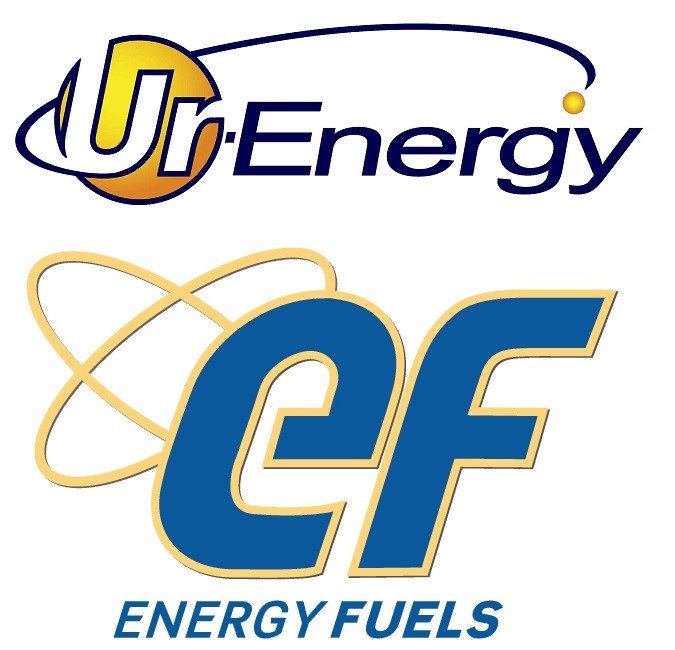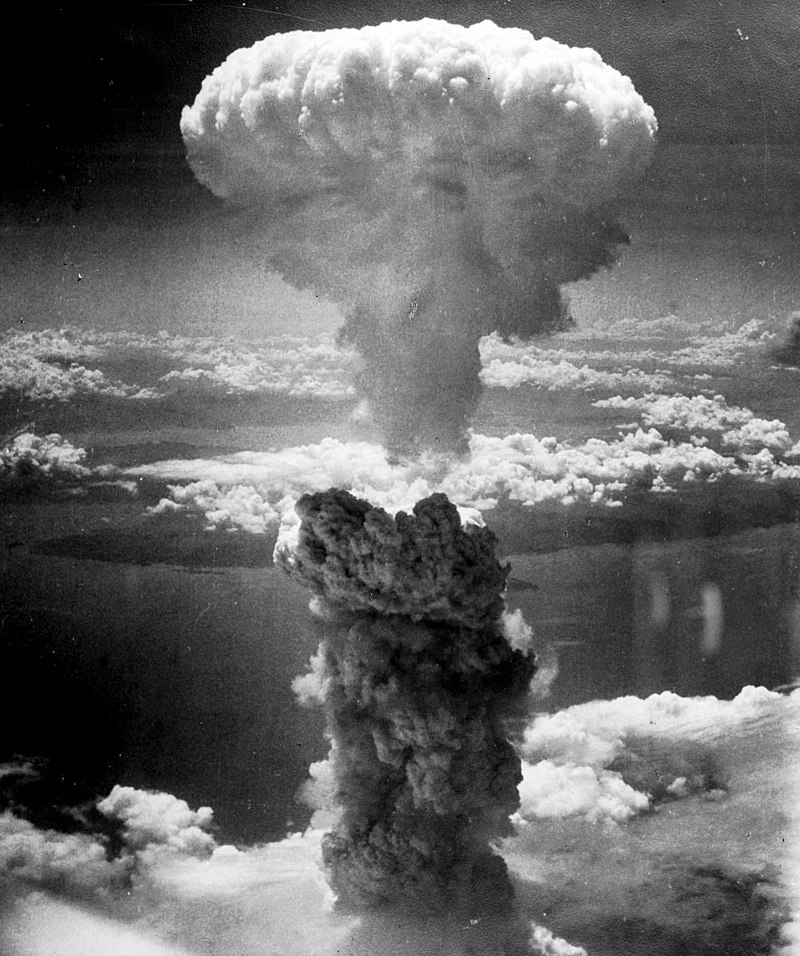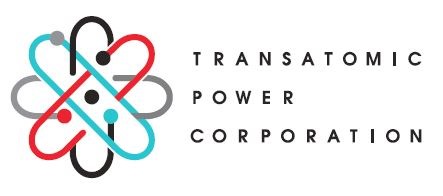Spent nuclear fuel from commercial nuclear power reactors is a global problem. None of the countries that host nuclear power reactors have a good permanent solution for disposal of spent nuclear fuel. There are test projects to build permanent geological repositories for such nuclear waste, but the U.S. canceled its work on a repository under Yucca Mountain in Nevada in 2009 and there won’t be any such repository until at least 2050 in the U.S. Then there is nuclear waste left over from nuclear weapons development. The U.S. does have such a repository in New Mexico. Other countries are still trying to find ways to deal with nuclear waste.
Last January, the U.K. government worked to restart its efforts to find a community that was willing to accept the siting of a nuclear waste dump in their area. They attempted to locate a willing community five years ago, but the effort failed. Now members of the U.K. Parliament are saying that they won’t rule out siting a nuclear waste dump under a national park. Critics of that possibility say that such a move could seriously impact the eight-billion-dollar income from use of national parks by the public.
The National Trust and eighteen other conservations groups in the UK have sent an open letter to the nuclear energy minister opposing suggestions that the Lake District be considered for a nuclear waste dump. The Lake District is the biggest national park in England and a World Heritage site. It is also located near Sellafield which currently contains most of the nuclear waste in the U.K.
In the open letter, groups such as the Woodland Trust and the Campaign to Protect Rural England said that the nuclear energy minister could risk damaging “long-established protections” that are given to national parks.
The minister has said that a deep geological nuclear waste facility would be similar to a potash mine that is being planned for a national park in North Yorkshire. He said that the nuclear waste facility like the planned potash mine would “leave very little blot on the landscape”.
The open letter from the conservation groups also said, “We recognize that safe disposal of nuclear waste is one of the key challenges our society currently faces but this should not be used as an excuse to put at risk the huge range of benefits these areas deliver for society, the environment and the economy.”
When asked, the nuclear energy minister stated that he would not exclude national parks as possible locations for a deep geological facility for the disposal of nuclear waste. He said, “I am not saying we should have them on national parks, but it would be very wrong to exclude them at the moment in this big policy statement.” Other members of parliament have said that “we cannot afford to restrict the siting process” and “most of the facility will be underground.”
Members of Parliament on the business, energy, and industrial strategy select committee said that national parks should not be excluded when considering siting for a national nuclear waste dump. A Department for Business, Energy and Industrial Strategy spokesperson said, “Legislation already ensures developments in national parks can only proceed in exceptional circumstances and must be appropriate and proportionate.”
The GDF Watch is monitoring the process for siting a facility. The Director of the GDF Watch said that there was zero chance of a nuclear waste dump being sited under a national park because local communities which have the final say would never approve.
U.K. Lake District:
Blog
-

Radioactive Waste 350 – The U.K. Is Considering Siting A Nuclear Waste Dump Under A National Park
-

Geiger Readings for Sep 28, 2018
Ambient office = 73 nanosieverts per hour
Ambient outside = 80 nanosieverts per hour
Soil exposed to rain water = 87 nanosieverts per hour
Organic carrot from Central Market = 100 nanosieverts per hour
Tap water =120 nanosieverts per hour
Filter water = 100 nanosieverts per hour
-

Nuclear Reactors 619 – U.S. Department of Commerce Is Investigating Charges Of Unfair Competition In U.S. Uranium Fuel
Nuclear power is supported by a global network of companies supplying technology, services and fuel to the operators of nuclear power plants. When there are trade disputes between nations, sometimes this can have an effect on companies that run nuclear power plants in the U.S. Recently, the U.S. has been imposing tariffs on imports and has been hit with reciprocal tariffs on U.S. goods being exported. This may pose a problem for the import of uranium fuel for nuclear power plants.
Ur-Energy Inc and Energy Fuels Inc lodged a complaint with the U.S. Department of Commerce (DoC) this summer that foreign competitors in the nuclear fuels market are subsidized by their governments and that this unfair competition has resulted in the two companies reducing their output and laying off workers. The DoC began a “Section 232” investigation into uranium imports in July of this year in response to the complaints.
President Trump wants to help domestic industries such as nuclear fuel production by imposing tariffs on foreign competitors but if he imposes uranium tariffs on foreign companies, then the cost of operation will go up for operators of U.S. nuclear power reactors. This goes against Trump’s desire to support the U.S. nuclear industry.
David Tamasi is a spokesperson for the Ad Hoc Utilities Group (AHUG). He said, “Imposing additional regulatory burdens on the already struggling nuclear energy industry will put 100,000 good paying domestic jobs and careers at risk and is inconsistent with President Trump’s and the Department of Energy’s policy pronouncements.”
The Trump administration has been working on keeping U.S. nuclear and coal power plants open which are in danger of shutting down under the pressure of cheap natural gas and renewables dropping in cost.
Uranium is used for the generation of twenty percent of U.S. electricity in ninety-eight commercial nuclear power reactors for industrial and home use. Uranium is also used for the creation of nuclear weapons and to power aircraft carriers and submarines. The U.S. nuclear industry says that for these reasons, a diverse supply of uranium is very important to the U.S. economy and national security.
As of 2017, about fifty eight percent of the U.S. uranium supply came from the U.S., Canada and Australia. Russia supplied sixteen percent, Kazakhstan supplied eleven percent, Uzbekistan supplied five percent, Namibia supplied five percent, South Africa suppled two percent and Niger supplied two percent.
Jeffrey Klenda is the president and CEO at Ur-Energy, and Mark Chalmers is the president and CEO at Energy Fuels. They issued a joint statement that said, “If the U.S. uranium mining industry does not survive, we will essentially hand over to unfriendly countries control of our nuclear sector.”
The DoC says that the investigation is still under way. It is just one of multiple investigations being carried out under Section 232 of the Trade Expansion Act on 1962.
This law is a hold-over from the Cold War years and, up until recently, has rarely been used.
There have already been probes by the Trump administration on steel and aluminum that have resulted in tariffs and quotas on those commodities. This has, in turn, resulted in retaliatory tariffs imposed by trading partners such as Canada, Mexico and the European Union. -

Geiger Readings for Sep 27, 2018
Ambient office = 90 nanosieverts per hour
Ambient outside = 95 nanosieverts per hour
Soil exposed to rain water = 107 nanosieverts per hour
Avocado from Central Market = 99 nanosieverts per hour
Tap water = 88 nanosieverts per hour
Filter water = 80 nanosieverts per hour
-

Nuclear Weapons 357 – Is Mutually Assured Destruction Still A Good Policy For Nuclear Weapons
The threat of nuclear war has been in the news a lot in the past few years. Russia has been rattling their nuclear saber by flying nuclear bombers over other countries and sailing nuclear subs into the territorial waters of other countries without permission. The Iran deal was supposed to prevent Iran from getting nuclear weapons, but the U.S. pulled out of the deal. Trump has said that maybe Japan and South Korea should get their own nuclear weapons. The U.S. and North Korea are trying to work out an agreement for N.K. to denuclearize.
When only the U.S. and the Soviet Union had huge arsenals, the logic of “mutually assured destruction” was trotted out to explain why we had to keep up with the Soviets. The idea was that we had to have a nuclear arsenal that could not be destroyed by a surprise attack from the Soviets. In other words, even if an enemy destroyed us with nuclear weapons, we would be able to reciprocate and destroy them.
The nuclear situation is much more complicated today than it was back in the days of the Cold War. Today, there are nine countries with nuclear arsenals, the U.S., Russia, China, the U.K., France, Israel, Pakistan, India and North Korea. It is no longer just a bipolar standoff between two super powers. The U.S. has defense treaties with countries around the world that would obligate the U.S. to come to their aid with U.S. nuclear weapons if they are attacked with nuclear weapons by their enemies. This is known as the U.S. “nuclear umbrella.” Does the theory of mutually assured destruction make sense today if it ever did?
The U.S. has spent billions of early warning systems to detect nuclear launches against the U.S. Other countries have not been so willing to spend much money on their own early warning systems. Soviet era satellites have ceased to function, and Russia is relying on ground based radar. There have been malfunctions in the past that have falsely indicated a nuclear attack against Russia and there is an automated system in place to launch missiles at the U.S. if the missile batteries are unable to communication with central command in Moscow. This system could malfunction and mistakenly destroy the U.S.
Each of the nine nuclear countries has its own basis for evaluating the intentions of potential enemies. Actions and statements that are considered innocent by one party may be seen to be provocative by another party in a dispute. Miscommunication that could lead to escalation of hostilities is a very real possibility.
Both the U.S. and Russia have reserved the right to use nuclear weapons if the “circumstances warrant.” Russia has threatened to use nuclear weapons against NATO if they are losing a conventional ground war against NATO. The U.S. is obligated by membership in NATO to come to the aid of other NATO members if they are attacked by Russia. A confrontation between NATO and Russia could escalate into a world nuclear war.
If a leader of the U.S. or Russia becomes irrational they could possibly launch an unjustified nuclear attack against the other country. In view of the odd behavior of the current U.S. president, Donald Trump, there have been discussions of reigning in the power of the U.S. president to unilaterally initiate a nuclear attack.
There is an old saying that the first casualty of war is the battle plan. Unpredictable events often occur in times of war. If a conventional war escalates into a nuclear war, it could mean the end of our civilization. Perhaps it is time to reconsider the idea of mutually assured destruction as a sound policy. -

Geiger Readings for Sep 26, 2018
Ambient office = 94 nanosieverts per hour
Ambient outside = 170 nanosieverts per hour
Soil exposed to rain water = 158 nanosieverts per hour
Orange bell pepper from Central Market = 97 nanosieverts per hour
Tap water = 102 nanosieverts per hour
Filter water = 193 nanosieverts per hour
-

Nuclear Reactors 618 – Transatomic Power Is Going Out Of Business
Transatomic Power is an American company that was founded in 2011 by two MIT alumni. The goal of Transatomic was the creation of the Waste Annihilating Molten Salt Reactor (WAMSR). Its purpose was to digest spent nuclear fuel. It was also designed to burn either thorium or uranium as fuel. The Transatomic design was inspired by work at the Idaho National Laboratory in the 1960s where a molten salt reactor was developed. Transatomic claimed that their reactor would be seventy- five times as efficient as commercial nuclear power reactors.
The Transatomic design called for a low pressure, high temperature molten salt system. It was supposed to be able to generate five hundred and twenty megawatts of electricity. The safety systems in the design included the ability to automatically drain the molten salt if the temperature got too high. It would also produce much less nuclear waste than conventional nuclear power reactors.
The molten salt would be lithium fluoride (LiF). The reason that LF was chosen over other potential molten salts was because it could dissolve more fuel per unit of salt that other choices. On the other hand, it also lacks the neutron-doubling of a beryllium molten salt which was the choice of INL. This occurs when a nucleus absorbs a neutron and then emits two neutrons.
In order to reduce tritium production during reactor operation, lithium 7 would be added to the molten salt. One problem with that is that current world lithium 7 production is very small and a single Transatomic reactor would require tons.
Zirconium hydride (ZrH) was chosen as a moderator. Molten LF corrodes ZrH so the plan was to add yttrium hydride to the salt to prevent corrosion.
The vat, piping, heat exchangers and pumps in the reactor were to be made of Modified Hastelloy-N. This is a corrosion resistant nickel chromium alloy that was developed at the INL in the 1960s as part of the original research into molten salt reactors.
There is a concern about possible corrosion from the molten salt. The INL used beryllium to manage this problem in their research. The NRC might have require that a prototype Transatomic reactor be run for two full fuel cycles in order to assess corrosion risks. This could have taken up to a decade and would have impacted attempts to commercialize this reactor design.
In 2016, Transatomic published a white paper in which they said that their reactor would not be seventy five times as efficient as existing commercial power reactors. They said in the paper that it might be twice as efficient. In addition, they also dropped the claim that they could burn up spent nuclear fuel.
These admissions prompted the need for significant redesign of the Transatomic reactor. This resulted in delays that put the company behind several of their competitors in the race to produce a demonstration reactor. The longer timeline and reduced performance claims interfered with efforts to raise the fifteen million dollars needed to continue work. Transatomic claims that their reactor would still have commercial potential because it would generate less waste than current commercial power reactors and be much safer.
Transatomic has just announced that it is shutting down operations because it does not have enough money to continue. They also said that they were going release all their intellectual property into the public domain in the hope that other researchers can continue working on the design.
The Third Way think tank released a statement in response to the closure saying that it did not mean that there were major challenges for work on advanced nuclear power reactor design. It may, however, mean that there will be a shakeout and consolidation of companies engaged in the quest for advanced nuclear power reactors.
